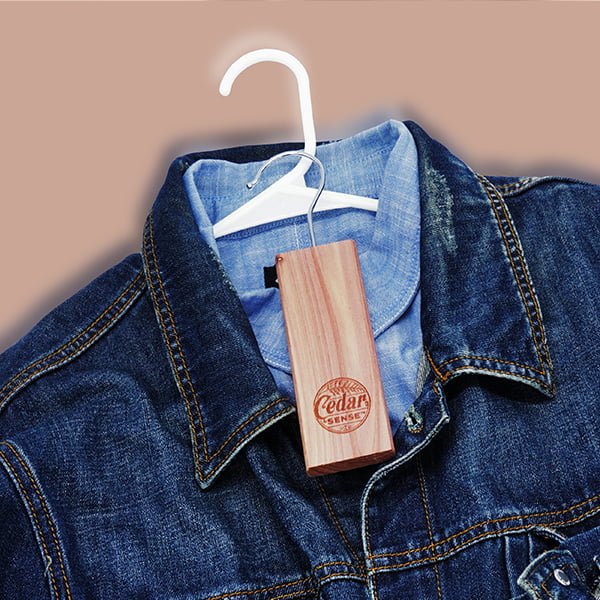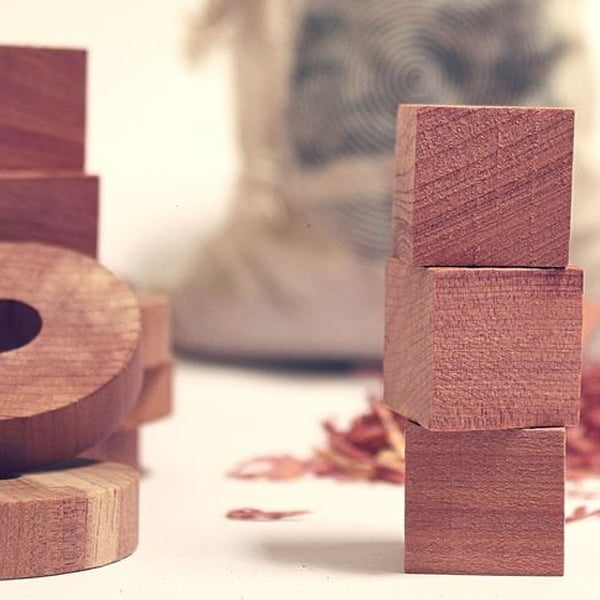Cedar wood, with its pleasing aroma and natural durability, has been a favorite choice for various uses in households for centuries. Among its most valued properties is its natural ability to repel moths, making cedar blocks a staple in closets and storage spaces. But how long does this natural repellent quality last, and what can be done to maintain it?
This comprehensive guide delves into the specifics of cedar’s moth-repellent properties, providing insights into how you can extend its effectiveness over time.

Understanding Cedar’s Natural Moth Repellent Properties
The Science Behind Cedar’s Repellency
Cedar wood contains natural oils, such as cedrol, cedrene, and thujopsene, which are responsible for its distinctive scent. These oils are not just pleasant for humans; they play a crucial role in repelling pests, particularly moths and their larvae.
The aroma of cedar is overpowering to moths, disrupting their olfactory navigation and deterring them from laying eggs. Additionally, these oils have been found to be toxic to moth larvae, preventing them from developing into maturity.
Types of Cedar Used in Moth Prevention
Not all cedar is created equal in terms of its repellent properties. The most commonly used types include:
- Eastern Red Cedar (Juniperus virginiana): Known for its strong scent and high oil content, it is particularly effective against moths.
- Western Red Cedar (Thuja plicata): While it has a milder scent compared to Eastern Red Cedar, it still serves as an effective deterrent due to its oil composition.
- Aromatic Cedar (Cedrus): Often used in the construction of cedar chests and closets, aromatic cedar combines aesthetic appeal with functional pest control.
Evaluating the Lifespan of Cedar Blocks
How Long Do Cedar Blocks Last?
Initially, when cedar blocks are fresh, their moth-repelling properties are at their peak. Over time, however, the intensity of the scent diminishes, which can reduce their effectiveness against moths.
- Typical Effective Lifespan: Generally, cedar blocks remain effective for about one to three years. This duration can vary based on the cedar type, the block’s exposure to air, and environmental conditions such as humidity.
Factors Affecting Cedar’s Effectiveness
- Humidity: High levels of moisture can accelerate the loss of cedar’s aromatic oils, diminishing its repellent properties more quickly.
- Air Exposure: Continuous exposure to air can lead to the evaporation of aromatic oils over time. This process is gradual but can be expedited under dry conditions.
Maintenance and Refreshing of Cedar Blocks
To maximize the lifespan and effectiveness of cedar blocks, regular maintenance is essential. Here are some effective methods to rejuvenate cedar blocks:
Routine Refreshing Techniques
- Sanding: Lightly sanding the surface of the cedar blocks every six months to a year can remove the top layer that may have lost its potency, exposing fresh wood with stronger aromatic oils.
- Applying Cedar Oil: To enhance the scent and effectiveness of older blocks, applying cedar oil directly to the wood can replenish the natural oils that have been lost over time.
Best Practices for Storage and Placement
- Ventilation: Ensure that cedar blocks are placed in areas where there is adequate air circulation. Avoid sealing them in airtight containers for long periods, as this can stifle the scent and reduce effectiveness.
- Strategic Placement: Distribute cedar blocks evenly in closets and drawers, ensuring that they are not overcrowded by fabrics. This placement allows the scent to disperse more effectively, creating a barrier against moths.
What Experts Say
Research and expert opinions support the use of cedar for moth prevention, citing its natural oils as both a deterrent and a method of disrupting larvae development. However, experts emphasize the importance of maintaining the cedar to ensure its continued effectiveness.
Access scientific research on the effectiveness of natural oils in pest prevention.
Conclusion
While cedar blocks offer a natural and aesthetically pleasing way to protect your garments from moths, understanding and undertaking proper maintenance practices can significantly extend their usefulness. By regularly refreshing the cedar and strategically placing it in your storage areas, you can maintain a moth-free closet for years to come.
This detailed exploration provides a thorough understanding of cedar’s moth-repellent properties and practical advice on how to maintain these benefits over time, ensuring your cherished belongings are protected in a natural and effective way.
 Barrel Saunas
Barrel Saunas



